
An aerial drone photo taken in June 2024 shows a view of the Tianwan Nuclear Power Station in Lianyungang City, east China's Jiangsu Province. (China National Nuclear Corporation/Handout via Xinhua)
NANJING, June 19 (Xinhua) -- China has successfully completed a project aimed at transporting steam generated by a nuclear power station to a petrochemical base. The project is designed to help reduce carbon emissions and explore collaborative energy utilization in nuclear and traditional industries.
The project, named Heqi No. 1 and constructed by the China National Nuclear Corporation (CNNC), went into operation on Wednesday. It will deliver 4.8 million tonnes of steam annually from the Tianwan Nuclear Power Station to a petrochemical base in Lianyungang City, east China's Jiangsu Province.
Nuclear power plants mainly rely on nuclear fission to release energy, heat water into steam and drive steam turbines to generate electricity. Additionally, the steam can not only be used for power generation, but also be applied in industrial production, said Liu Yongsheng, maintenance general manager of the Jiangsu Nuclear Power Corporation of the CNNC.
For petrochemical enterprises, steam is an indispensable heat source and power source in the production process. The petrochemical industry, which faces the challenge of a clean and low-carbon transformation, prefers to replace coal consumption with nuclear energy to provide heat, steam, and power, Liu said.
The project uses the steam generated from the turbine system of the Tianwan Nuclear Power Station Unit 3 and Unit 4 as the heat source. It transports the steam through industrial gas pipelines to the petrochemical industrial base via multi-stage heat exchange, replacing traditional coal consumption and addressing the heat and power needs of petrochemical enterprises.
The project is expected to reduce the consumption of standard coal by 400,000 tonnes annually, equivalent to cutting the emissions of 1.07 million tonnes of carbon dioxide, 184 tonnes of sulfur dioxide and 263 tonnes of nitrogen oxides. It's also comparable to planting 2,900 hectares of new woods each year, and saving over 700,000 tonnes of carbon emission allowances for the petrochemical base annually, according to the CNNC.
The nuclear power units have four layers of safety barriers, and multi-layer isolation measures and radiation monitoring instruments are adopted to ensure the safety of the production and transmission of the steam, according to the corporation.
The cooperation between the Tianwan Nuclear Power Station and the petrochemical base has set an example for China's nuclear industry, while also providing a new solution for the green upgrading of energy supply in the traditional petrochemical industry, said Zhang Yi, chairman of the Jiangsu Nuclear Power Corporation.
Huang Ping, secretary-general of the China Atomic Energy Authority (CAEA), said the CAEA supports the application of nuclear technology in industries, agriculture, healthcare, environmental protection, safety and other fields. The CAEA will continue to nurture and develop promising nuclear technology projects and applications.
According to Ye Qizhen, an academician of Chinese Academy of Engineering, this approach can meet the diverse energy needs of energy-intensive industries and provide decarbonization solutions for high-carbon emission sectors.
According to the CAEA, nuclear energy has been widely used in various fields in China, including isotope production, hydrogen production and seawater desalination. Moreover, nuclear technologies have been applied in all aspects of people's lives, such as industries, agriculture, medicine, environmental protection and security. ■
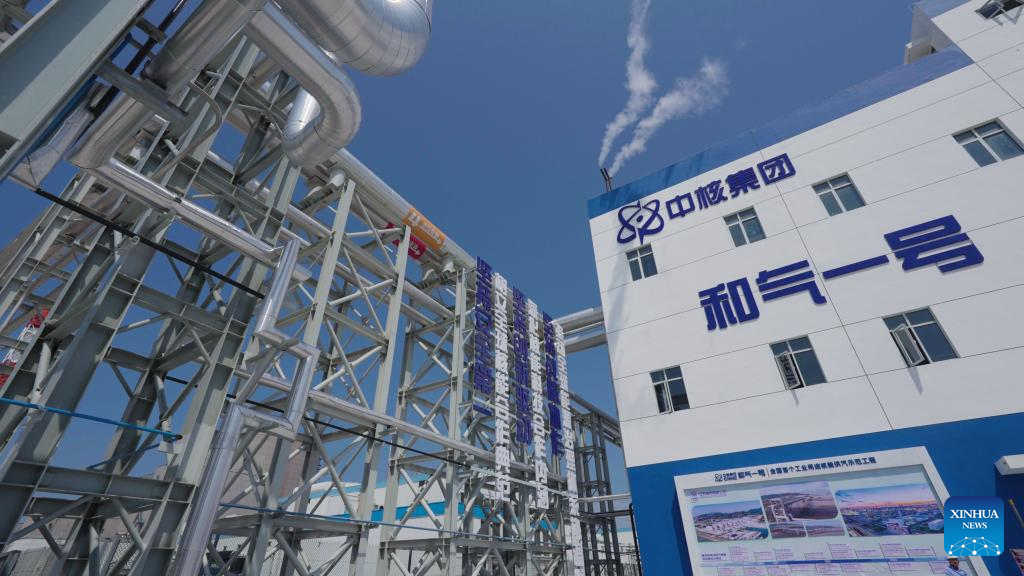
This photo taken in June 2024 shows a facility of Heqi No. 1 in Lianyungang City, east China's Jiangsu Province. (China National Nuclear Corporation/Handout via Xinhua)

An aerial drone photo taken on June 19, 2024 shows a view of the Tianwan Nuclear Power Station in Lianyungang City, east China's Jiangsu Province. China has successfully completed a project aimed at transporting steam generated by a nuclear power station to a petrochemical base. The project is designed to help reduce carbon emissions and explore collaborative energy utilization in nuclear and traditional industries. (Xinhua/Li Bo)
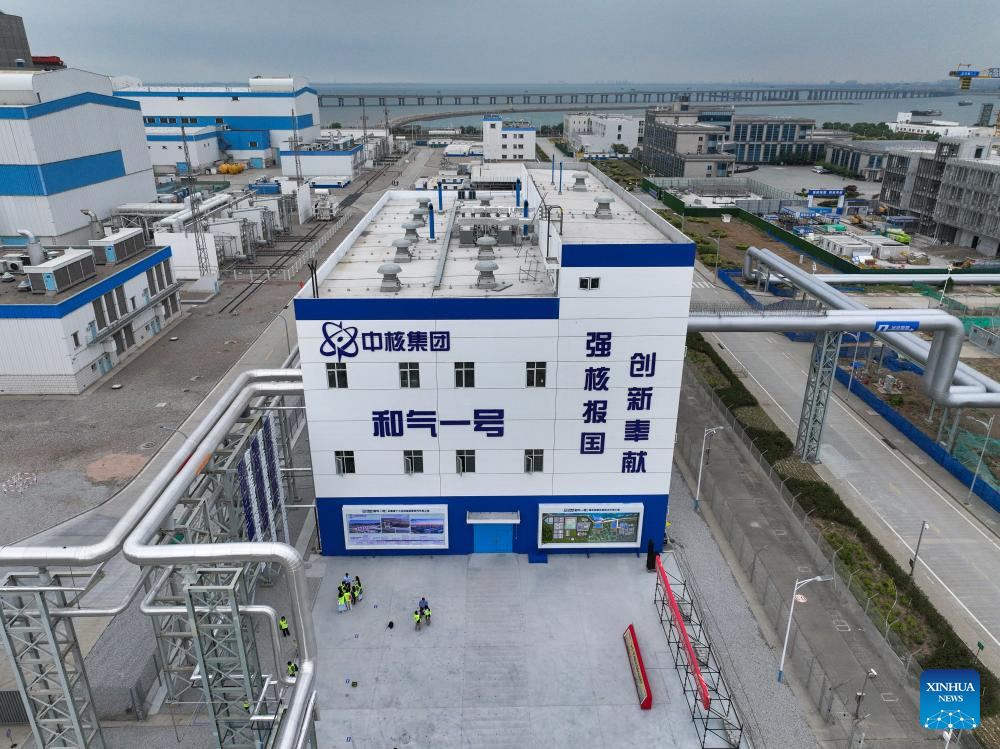
An aerial drone photo taken on June 19, 2024 shows an energy station of Heqi No. 1 project in the Tianwan Nuclear Power Station in Lianyungang City, east China's Jiangsu Province. China has successfully completed a project aimed at transporting steam generated by a nuclear power station to a petrochemical base. The project is designed to help reduce carbon emissions and explore collaborative energy utilization in nuclear and traditional industries. (Xinhua/Li Bo)

A drone photo taken on June 19, 2024 shows Heqi No. 1 project's pipelines in the Tianwan Nuclear Power Station in Lianyungang City, east China's Jiangsu Province. China has successfully completed a project aimed at transporting steam generated by a nuclear power station to a petrochemical base. The project is designed to help reduce carbon emissions and explore collaborative energy utilization in nuclear and traditional industries. (Xinhua/Li Bo)
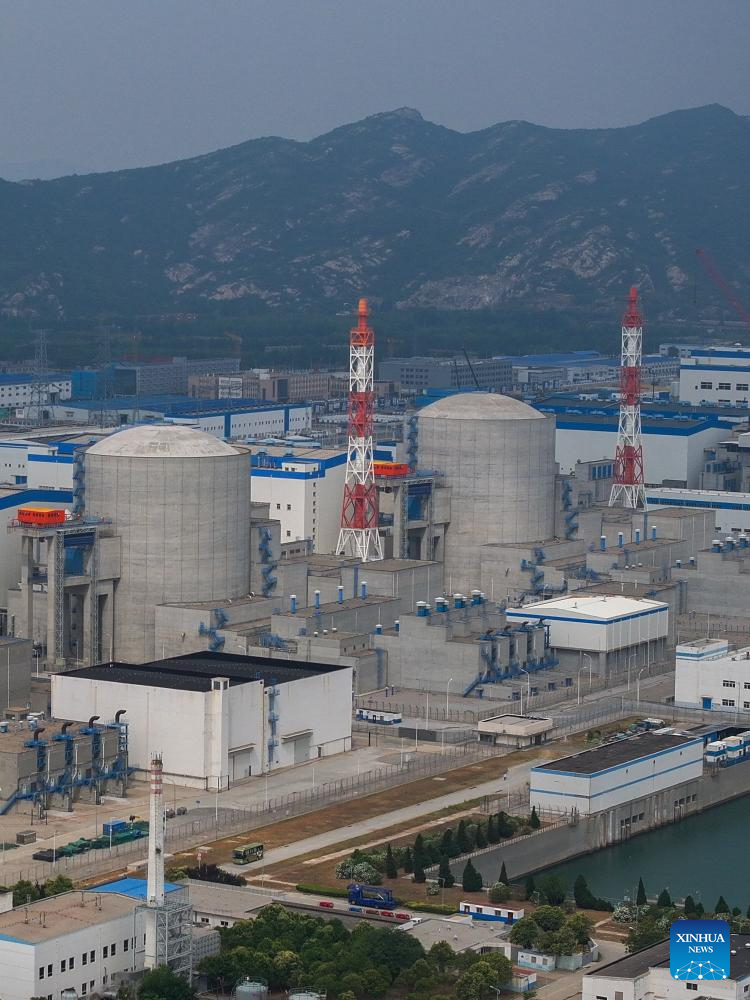
An aerial drone photo taken on June 19, 2024 shows the Unit 3 and Unit 4 of Tianwan Nuclear Power Station in Lianyungang City, east China's Jiangsu Province. China has successfully completed a project aimed at transporting steam generated by a nuclear power station to a petrochemical base. The project is designed to help reduce carbon emissions and explore collaborative energy utilization in nuclear and traditional industries. (Xinhua/Li Bo)
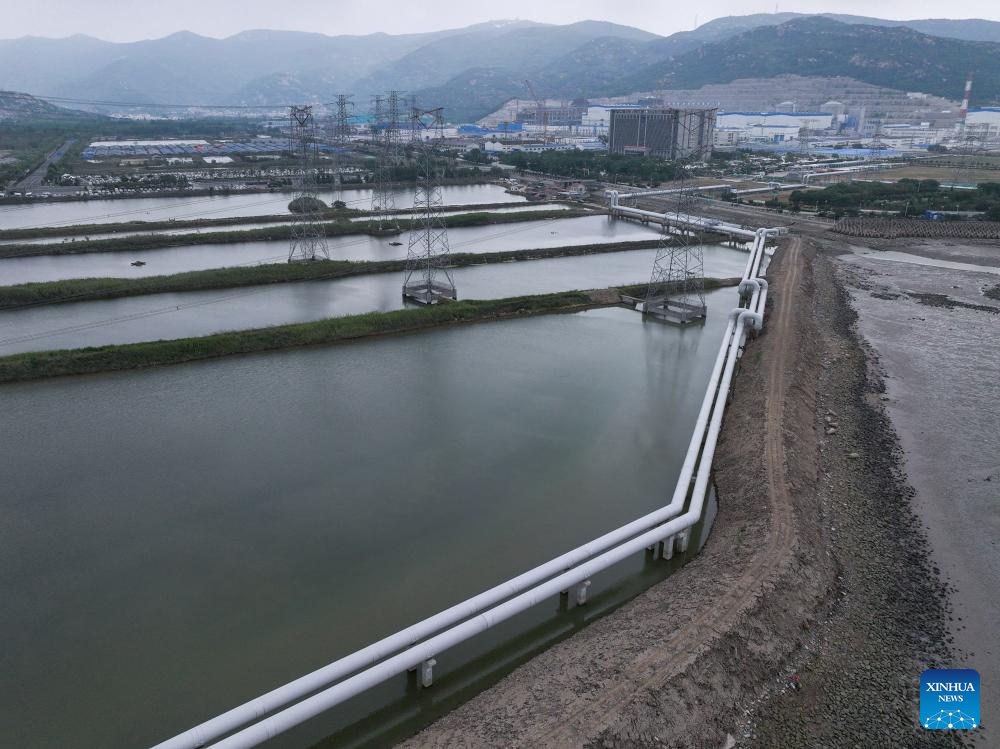
A drone photo taken on June 19, 2024 shows Heqi No. 1 project's pipelines in the Tianwan Nuclear Power Station in Lianyungang City, east China's Jiangsu Province. China has successfully completed a project aimed at transporting steam generated by a nuclear power station to a petrochemical base. The project is designed to help reduce carbon emissions and explore collaborative energy utilization in nuclear and traditional industries. (Xinhua/Li Bo)
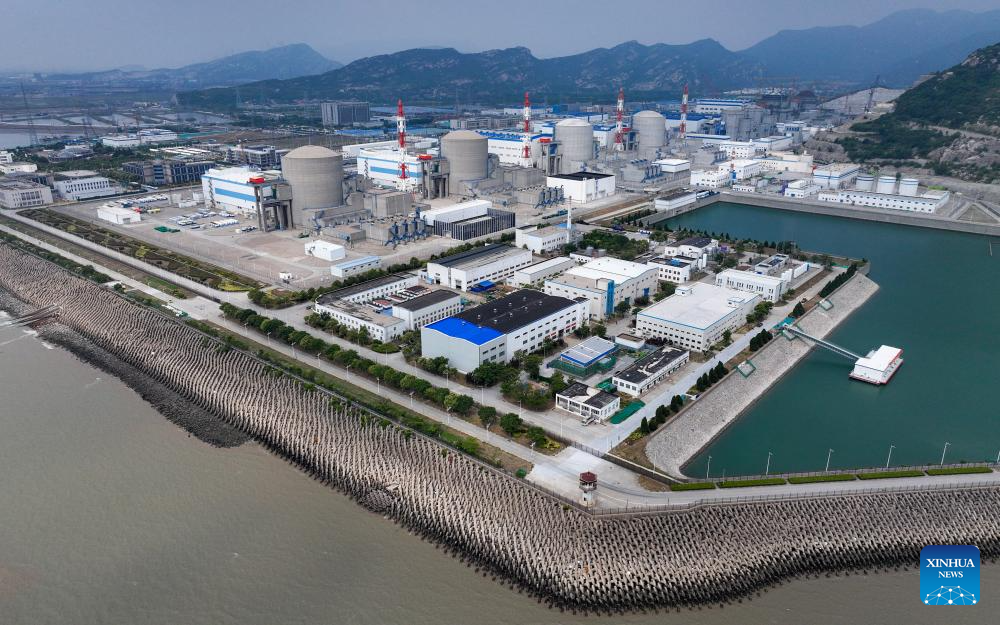
An aerial drone photo taken on June 19, 2024 shows a view of the Tianwan Nuclear Power Station in Lianyungang City, east China's Jiangsu Province. China has successfully completed a project aimed at transporting steam generated by a nuclear power station to a petrochemical base. The project is designed to help reduce carbon emissions and explore collaborative energy utilization in nuclear and traditional industries. (Xinhua/Li Bo)
编辑:刘思雨